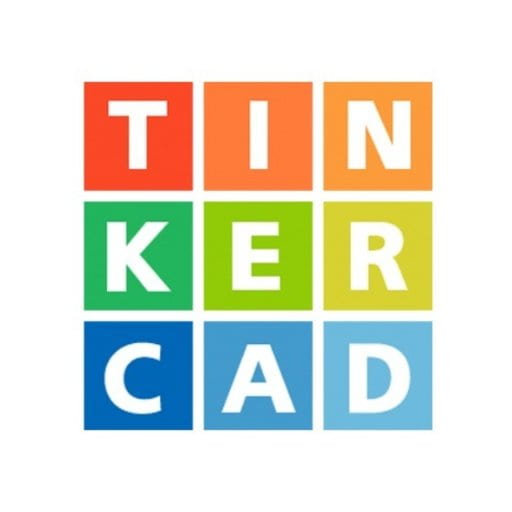🌲How is the reproduction of cells essential to the survival of organisms?🌲
🌲Hello and welcome back to the forest of learning! In this post I will be going through the process of our most recent Scimatics project, “Meiosis Models”. In this project, we learned about cellular reproduction and the cell cycle as well as built models of Mitosis and Meiosis in Tinkercad. We covered a lot of key biological concepts in this project that was really cool to learn about.This was an individual project and was also a topic that I found pretty interesting! I gained a lot of knowledge in this project and if you are interested in seeing what I learned, just keep reading!🌲

As always, we followed the project path throughout the course of the project;

So, learning about reproduction? Fun stuff. This project started off with an unpleasant jump into the high school right of passage: watching a video from the 1980’s about human sexual reproduction. Needless to say, this experience was an interesting way to start a project- although, it was pretty fun to see the entire classroom dead silent and extremely uncomfortable while we were forced to watch “Life’s Greatest Miracle” together. To me, this wasn’t too bad: my sister is studying to become a midwife and I have had to hear her rant about reproduction, pregnancy, and other pleasant topics under that category for the past 3 years or so. Although I didn’t necessarily enjoy this starting activity, I appreciate that this video introduced us to some of the basic concepts we would be learning throughout the project.
After learning about “Life’s Greatest Miracle”, we created a project start mindmap which included our understanding of reproduction. I feel that I showed a sophisticated level of understanding the skill “Questioning and Predicting” here because I demonstrated a deep intellectual curiosity of the concepts through asking clarifying questions. I also articulated my previous knowledge of this topic in a way that accurately demonstrates the understandings I have made.

Once we finished our mindmap, it was time for building some knowledge! We learned through watching some videos, reading textbooks, and completing workbooks. From this, we were able to learn some interesting facts: Humans share about 85% of our DNA with corn, there are MANY different types of asexual reproduction, sexual reproduction is much more complex than just gamete + gamete, and of course, the entire process of mitosis and meiosis. I actually found this unit to be really fascinating! I have some chemistry and biology textbooks that I used to colour in when I was younger, and some of the concepts were familiar to me from those days which was pretty cool. Everything I learned was something that actually did interest me a lot.
[metagallery id=2184]
After building the knowledge, we needed to be tested on it! To do so, we watched Khan Academy videos and completed the small quizzes and unit test. I was pretty confident with the concepts we reviewed, so, it didn’t take me too long to go through each quiz. From the videos and articles in the unit, I gained even more information about this concept which was also really cool. Like I said earlier, I find cellular reproduction and cellular processes in general really fascinating so I actually did find that this activity was also really interesting.

Now, time for building! So, as I mentioned in the beginning, one of the main goals of this project was to create some models of mitosis and meiosis. Before we could start on that, we needed to re-familiarize ourselves with using Tinkercad. We also used Tinkercad in the past during our project “Ultimate Design Challenge” we completed in Grade 8 so, we weren’t starting completely from scratch. If you are not sure what Tinkercad is, it is a slightly finicky 3D modelling software. Regardless, even if we already knew a how to use it, we still completed some Tinkercad tutorials which were helpful to remind ourselves!

Here are the Tinkercad tutorials I completed:
After we familiarized ourselves with using Tinkercad, it was now time to create our models! Starting with Mitosis. So, mitosis consists of six stages (technically five if you don’t include interphase); Interphase, Prophase, Metaphase, Anaphase, Telophase, and Cytokinesis. Mitosis is a form of cellular division that produces two diploid daughter cells with identical genetic information. Mitosis is used differently depending on if it is a unicellular or multicellular organism. In unicellular organisms (like fungi), uses mitosis to multiply and increase the species. In multicellular organisms (like animals and plants), mitosis can be used to grow during development or repair or regenerate damaged tissue. Designing each phase of mitosis in Tinkercad took a pretty long time, but, that’s ok! I am pretty happy with how they turned out.
[metagallery id=2225]
Next is Meiosis! Meiosis is a division process that takes us from a diploid cell (one with two sets of chromosomes) to haploid cells (ones with a single set of chromosomes). Meiosis has a two-step division process. Homologous pairs separate during a first round of cell division, called meiosis I. Sister chromatids separate during a second round, called meiosis II. Each of my models were made to represent this process. This time, making the models was harder and easier at the same time- let me explain: since I had already made my models of mitosis, I could use the same parts and was pretty comfortable with using Tinkercad. But, also, mitosis has only six stages with meiosis has eleven! Not to mention mu ore details within the models as well. Although this was a tedious process, I do enjoy how they turned out!
[metagallery id=2249]
So, now that are models are done, let me introduce another little addition to the project! At the very beginning, on the second day in fact, we actually adopted children. Let me explain: we were each given garlic cloves coming from three different garlic parents. We planted our cloves in hopes to kill them- I mean, dissect and study them later. My three garlic children were all given names by Supaus’s random name generator. Let me introduce you to Anoop, Verner, and Alcides! They are all descendants of the mighty Howard- their garlic parent. Don’t get too attached though, they die.

Anyways, after about two weeks of sun bathing, my three children were now ready to be examined under a microscope- or more, their roots. Now, in that sense we are not going to be giving them an ancestry test, but more literally, we will be taking a look at their root tips. Each person and their table mate (My partner was Supaus. Go check out his blog!) took their garlic cloves and followed a scientific procedure to view the stages of mitosis under a microscope. Here, I think I was able to demonstrate an accomplished level of understanding “Planning and Conducting” This was a very condition dependant situation, and, unfortunately, after multiple attempts, we were still unable to capture the stages of mitosis under a microscope. There were many factors that went into this procedure and it was really just about luck. That said though, it was still really cool to see other peers succeed! My friend Nolan got some amazing photos that will be shown in his blog post and you should definitely check out! Even though I couldn’t capture any active cells in mitosis, I still got some nice attempts and it was still a fun experience.
After my failed attempts at examining mitosis under a microscope, our next step was to make a video! Now, this video was supposed to include the photos of the cells under a microscope, however, for this first draft, because mine didn’t turn out, I used photos from the textbook. This video was meant to be the final product of this project where we would present our understandings of the concept. I am really happy with how it turned out I think I did well at explaining the concepts and using visuals to enhance my scientific communication skills. And, speaking of Scientific Communication, I feel that I demonstrated a sophisticated level of understanding this core competency within this video and throughout the project. I am overall just really proud of it!
I created my video primarily in Keynote and I am SO happy that I did: as I mentioned, my initial attempt of gathering photos did not turn out too well. This meant that I needed to revise my video to include the new photos of cells in Mitosis. Revising this was much more simple since I was able to easily replace the old textbook photos with the updated images. So, thanks past Teva!
This was my first draft of the video- which is no different than my final draft except for the photos, so, there is really no need to watch this one. 🙂
After my failed attempt at getting photos, we actually had another chance to redeem ourselves! We were able to use pre-made slides of mitosis which included preserved cells (which I thought was really cool!). These slides were much easier to identify mitosis and we were able to get some amazing images of cells! So awesome!! Can you tell I am excited? Science is cool.
Now, with the new images, I was able to revise and finish my final video! ⬇️
At the very end of this project, we re-visited our project start mindmap and expanded our understandings, answered our former questions, and added new information to it. I learned a lot in this project and I honesty think this has to be my largest mindmap yet! The file was too large to even save as a photo so I needed to delete some stuff in order to include this in my post. It’s really cool to see how much my understanding has grown since the start of this project!

This project ended earlier than planned for me as I am off adventuring starting tomorrow! I wish I was able to be here to celebrate with my peers, but, even if this post and my video was made in a bit of a rush, I hope I was able to accurately show you how much I learned in this project!
🌲I really enjoyed this project! I learned and improved so much. I was able to build on my Tinkercad skills and 3D modelling, video and film making, and following procedures. I was also able to learn about cellular reproduction which I found rekindled my former interest in biology. I had a lot of fun making mitosis and meiosis models and bringing my understandings to life as well! So, how is the reproduction of cells essential to the survival of organisms? Well, from what I have learned in this project, without mitosis and meiosis occurring within cells, we would simply not exist! Reproduction provides continued existence of species. Mitosis allows organisms to build and regenerate, while meiosis actually provides diversity within species and also contributes to surviving natural selection due to the unique attributes of each organism. Without mitosis and meiosis, living organisms would simply cease to exist. So, thank you little cells! Overall, I have to say this may have been one of my favourite topics to learn about in Scimatics this year, and, as always, I hope you enjoyed watching me grow in the forest of🌲
🌲learning🌲













































































































Leave a Reply